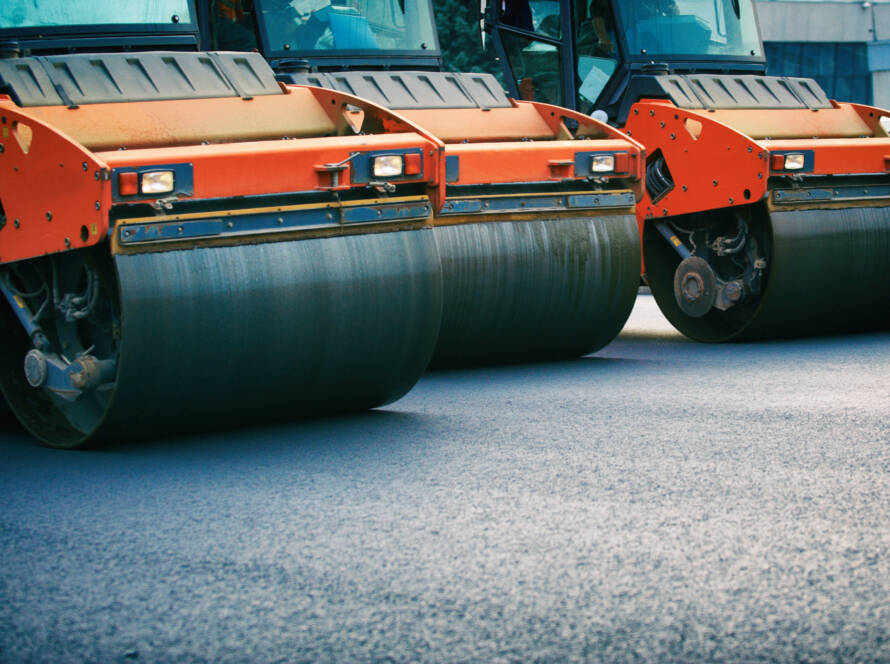Crack sealing vs overlaying is a crucial consideration in road maintenance and asphalt surface care. Choosing between the two isn’t just about budget—it’s about extending surface life, improving safety, and avoiding more expensive repairs down the line. Whether you’re responsible for a residential driveway, a commercial surfacing project, or a public roadway, making the right call can save you time and money while enhancing surface longevity.
This article explores the five main differences between crack sealing and overlaying, providing insights into when each method is most appropriate. From understanding material performance to recognising when to act, you’ll come away equipped to make the smartest decision for your surface.
1. What is Crack Sealing?
Crack sealing is a preventive maintenance technique that involves filling cracks in asphalt with a hot rubberised sealant. It’s commonly used when small to medium-sized cracks appear due to stress, temperature fluctuations, or minor structural movement.
The goal is to prevent water and debris from entering the cracks, which can accelerate deterioration and lead to potholes, sub-base failure, and deeper structural issues. Crack sealing is especially effective when applied early in the surface’s life cycle, helping to delay more invasive procedures like resurfacing or full replacement.
Benefits of Crack Sealing:
- Cost-effective and quick to apply
- Ideal for early intervention
- Minimises further damage
- Extends pavement life by several years
2. What is Overlaying?
Overlaying involves applying a new layer of hot mix asphalt over an existing surface. It’s more than a touch-up—it’s a restorative method that gives the surface a fresh, durable layer. It can improve smoothness, appearance, and strength.
Overlaying is often used when a surface has widespread cracking, minor rutting, or surface wear that can’t be resolved with crack sealing alone. It doesn’t fix structural issues deep in the pavement layers, but it can offer mid- to long-term durability at a fraction of the cost of full reconstruction.
When to Consider Overlaying:
- Multiple interconnected cracks or shallow potholes
- Uneven surfaces or fading texture
- Tired-looking car parks or roadways
- When aesthetics and function both matter
3. Crack Sealing vs Overlaying: Materials & Application
The materials and tools used in crack sealing vs overlaying are different in purpose and complexity.
Crack Sealing:
- Uses hot rubberised or polymer-modified bitumen
- Applied with pour pots or pressure injectors
- Minimal surface preparation needed
- Ready for traffic soon after cooling
Overlaying:
- Uses hot mix asphalt (HMA)
- Requires milling, cleaning, and tack coating
- Laid with pavers and compacted with rollers
- May need lane closures or traffic diversions
While crack sealing is a fast and simple process, overlaying is more intensive and better suited for moderately damaged surfaces where a stronger visual and structural upgrade is required.

4. Cost Comparison and Return on Investment
The cost of any repair method matters—but so does long-term value. Crack sealing typically costs less upfront, but it’s designed to prevent damage rather than restore a failing surface. Overlaying, while more expensive initially, offers more significant improvement and longer-term resilience.
| Method | Average Cost (per m²) | Lifespan |
|---|---|---|
| Crack Sealing | £2 – £4 | 3–5 years |
| Overlaying | £15 – £25 | 8–15 years |
Crack sealing should be thought of as a first line of defence, whereas overlaying is a second-tier restoration technique that bridges the gap between patch repair and full reconstruction.
5. Impact on Surface Longevity
One of the major differences in crack sealing vs overlaying is the effect each has on surface longevity. Crack sealing preserves the current surface, delaying further wear. Overlaying revitalises it, adding years to its lifespan and restoring functional surface properties like skid resistance and smoothness.
By sealing cracks early, you prevent water ingress that causes potholes and sub-base erosion—extending the life of the surface significantly. Overlaying, in contrast, reinforces the structure and renews the wearing course, making it a suitable choice when your asphalt surface starts showing signs of age and fatigue.
6. When Should You Use Each Method?
Use Crack Sealing If:
- Cracks are less than 25mm wide
- The surface is structurally sound
- You need a quick, affordable fix
- You’re planning for proactive maintenance
Use Overlaying If:
- Cracks are extensive or alligator-patterned
- There are multiple surface defects
- You want to improve aesthetics and ride quality
- You’re aiming for 10+ years of service life
7. How Climate and Weather Influence Your Choice
Crack sealing is effective year-round, even in colder conditions. It’s a great option for emergency or winter maintenance, especially on roads where deterioration happens rapidly due to freeze-thaw cycles.
Overlaying, however, requires dry, warm weather to install effectively. Asphalt laid in wet or cold conditions is prone to poor compaction and early failure. If your surface needs attention during winter, crack sealing may be the best temporary solution until a full overlay can be performed in spring or summer.
8. Visual Impact and Aesthetic Considerations
Commercial clients and local authorities often prioritise appearance, especially for high-profile areas like business entrances, customer car parks, or retail spaces.
Overlaying significantly improves appearance, removing faded, cracked, or uneven patches. Crack sealing, while functional, can leave visible rubber lines, which may not be desirable in visually sensitive environments.
Conclusion: Making the Right Choice
Ultimately, the decision between crack sealing vs overlaying depends on the current condition of your surface, your goals, and your budget. Crack sealing is an effective preventive solution to stop early damage in its tracks, while overlaying offers a more robust answer for worn or tired asphalt surfaces.
Both play a vital role in preserving the function, safety, and appearance of roads, driveways, and commercial areas. Investing in the right solution today can prevent expensive repairs or even total reconstruction down the line.
Need expert guidance on the best repair method for your project?
Contact Total Surfacing—your trusted specialists in crack sealing, overlaying, pothole repair, and complete commercial surfacing solutions.



